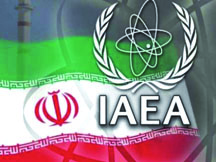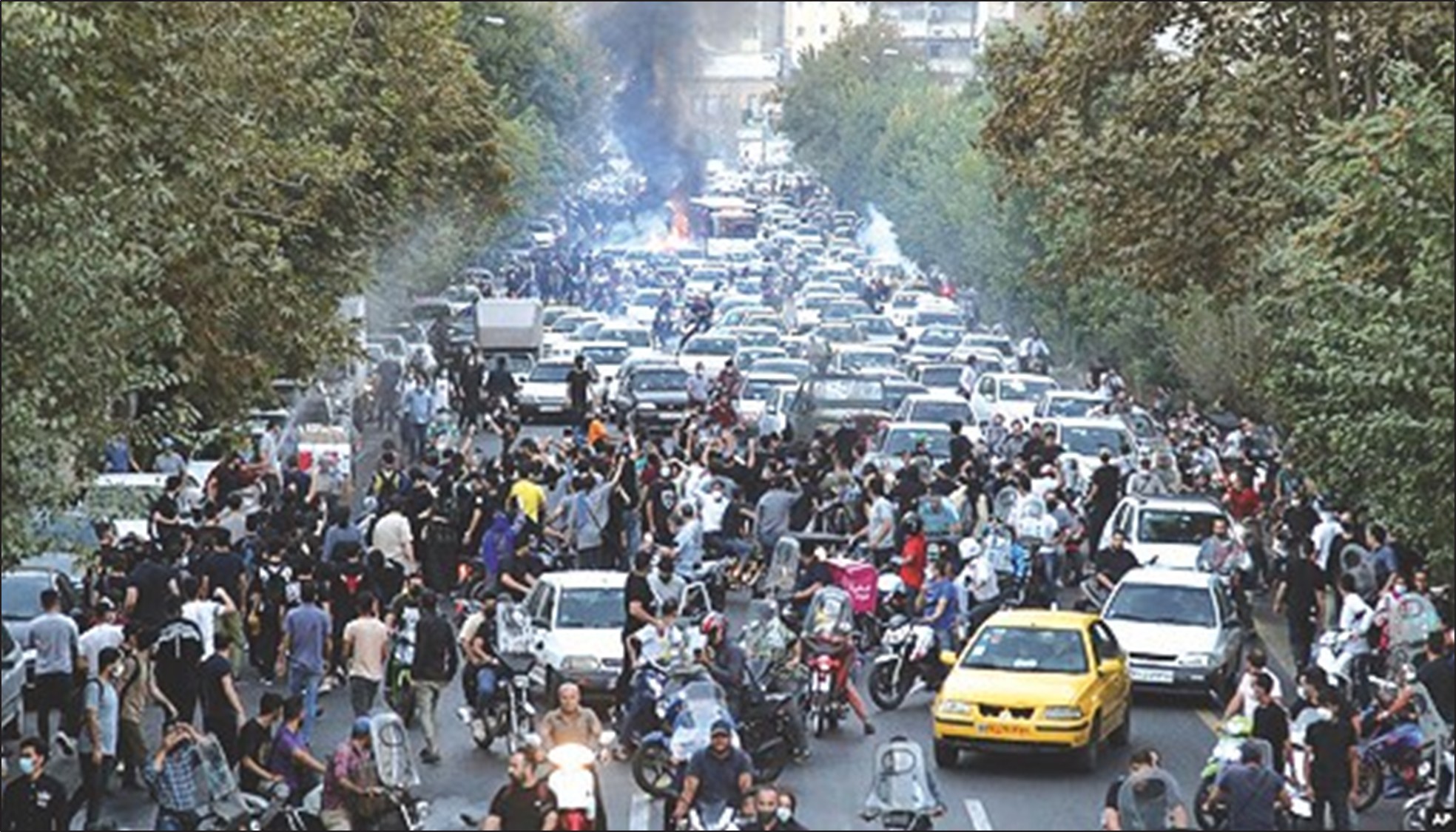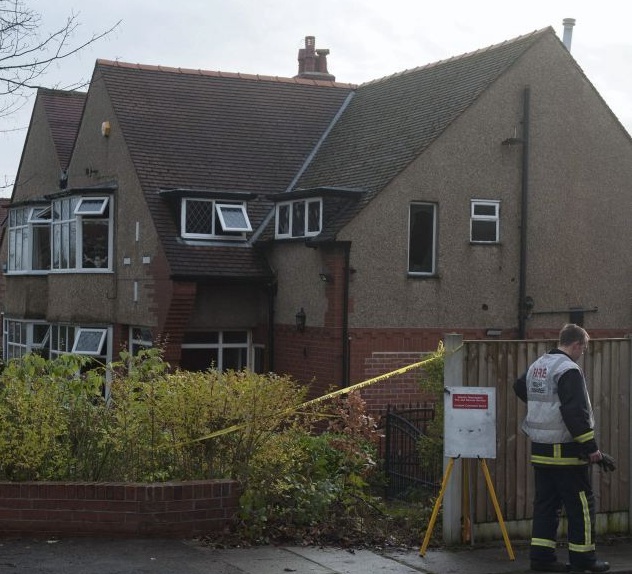December 13-2013
By Henry A. Kissinger And George P. Shultz
 As former secretaries of state, we have confronted the existential issue of nuclear weapons and negotiated with adversaries in attempts to reduce nuclear perils. We sympathize with the current administration’s quest to resolve the Iranian nuclear standoff through diplomacy. We write this article to outline the options as we see them emerging from the interim agreement for a policy based on the principle of “trust and verify.”
As former secretaries of state, we have confronted the existential issue of nuclear weapons and negotiated with adversaries in attempts to reduce nuclear perils. We sympathize with the current administration’s quest to resolve the Iranian nuclear standoff through diplomacy. We write this article to outline the options as we see them emerging from the interim agreement for a policy based on the principle of “trust and verify.”
For two decades, American presidents from both parties have affirmed that the U.S. is unalterably opposed to an Iranian military nuclear capability. They have usually added a warning to the effect that “all options are on the table” in pursuit of this policy. A clear trans-Atlantic consensus, a decade of International Atomic Energy Agency (IAEA) reports and six United Nations Security Council resolutions have buttressed this position.
The interim nuclear deal with Iran has been described as the first step toward the elimination of Iran’s ability to build a nuclear weapon. That hope resides, if at all, in the prospects of the next round of negotiations envisaged to produce a final outcome within six months. Standing by itself, the interim agreement leaves Iran, hopefully only temporarily, in the position of a nuclear threshold power—a country that can achieve a military nuclear capability within months of its choosing to do so. A final agreement leaving this threshold capacity unimpaired would institutionalize the Iranian nuclear threat, with profound consequences for global nonproliferation policy and the stability of the Middle East.
For 35 years and continuing today, Iran has been advocating an anti-Western concept of world order, waging proxy wars against America and its allies in Lebanon, Syria, Iraq and beyond, and arming and training sectarian extremists throughout the Muslim world. During that time, Iran has defied unambiguous U.N. and IAEA demands and proceeded with a major nuclear effort, incompatible with any exclusively civilian purpose, and in violation of its obligations under the Non-Proliferation Treaty in effect since 1970. If the ruling group in Iran is genuinely prepared to enter into cooperative relations with the United States and the rest of the world, the U.S. should welcome and encourage that shift. But progress should be judged by a change of program, not of tone.
The heart of the problem is Iran’s construction of a massive nuclear infrastructure and stockpile of enriched uranium far out of proportion to any plausible civilian energy-production rationale. Iran amassed the majority of this capacity—including 19,000 centrifuges, more than seven tons of 3.5%- to 5%-enriched uranium, a smaller stock (about 196 kilograms) of 20%-enriched uranium, and a partly built heavy-water reactor that will be capable of producing plutonium—in direct violation of IAEA and Security Council resolutions.
Efforts to resolve this issue through negotiation have a long pedigree. They began in 2003, after the revelation that Iran had been secretly constructing a uranium-enrichment facility at Natanz and a heavy-water reactor at Arak. They have continued on and off in different permutations, with the Geneva negotiations the most recent and fullest expression.
The record of this decade-plus negotiating effort combines steadily advancing Iranian nuclear capabilities with gradually receding international demands. A negotiation begun by the EU-3 (Britain, France and Germany, with the backing of the U.S.) started from the position that, in light of Iran’s record of nondisclosure of nuclear matters and its noncompliance with U.N. resolutions, any Iranian uranium enrichment or plutonium-production capability was unacceptable. Following the revelation of the Natanz and Arak facilities, the IAEA board of governors adopted a 2003 resolution expressing “grave concern” and calling on Iran to “suspend all further uranium enrichment-related activities” and “any reprocessing activities.” The resolution called it “essential and urgent” for Iran to provide unrestricted access to IAEA inspectors, and requested that Iran “promptly and unconditionally sign, ratify and fully implement” an additional protocol to its Non-Proliferation Treaty safeguards.
Nearly every year since then, the Western powers—first through the EU-3 and then through the P5+1 (the permanent members of the Security Council, including China and Russia, plus Germany)—offered Iran diplomatic and technical inducements to take account of Iran’s announced aspiration to become a technologically advanced country. These countries put forward programs of technical assistance and nuclear fuel for a verifiably civilian Iranian nuclear program.
Iran rejected the proposals and accelerated its nuclear efforts. It periodically engaged in talks but never dismantled any aspect of its enrichment infrastructure or growing stockpile of fissile material. Six U.N. Security Council resolutions passed in 2006, 2007, 2008 and 2010 condemned Iran’s defiance and imposed sanctions, demanding an unconditional halt to nuclear enrichment.
The interim agreement reached on Nov. 24, though described by all sides as temporary, thus represents a crucial test of whether the seemingly inexorable progress to an Iranian military nuclear capability can be reversed. In exchange for an estimated $8 billion in sanctions relief, Iran will freeze for six months its existing nuclear program and stockpile, but through an unusually circuitous mechanism that reflects its determination to continue to enrich.
Iran has been permitted during the interim agreement to continue to add to its existing stockpile of seven tons of 3.5%- to 5%-enriched uranium with the proviso that this stockpile must be reduced again to its original level by the end of six months. (This means that Iran retains the additional enriched material throughout most of the agreement, adding to its leverage in the follow-up negotiations.) Iran has agreed to “neutralize” its small stockpile of 20%-enriched uranium by converting it to an oxide by the end of the agreement, though Iran retains the technical capability to enrich an equivalent stockpile at a later date. Progress on a heavy-water reactor and plutonium-reprocessing facility at Arak has been paused, though it appears that ancillary work on the site will continue. Daily inspections are stipulated to verify Iran’s compliance while the interim deal is in force.
A modest benefit of the Geneva agreement is that it achieves, albeit temporarily, a small lengthening of the “breakout” time Iran would need to construct a nuclear weapon by several weeks, as described by administration spokesmen. American diplomacy in the next phase will need to grapple with the challenge that this gain has come at the price of a subtle but fundamental change in the conceptual basis of the nuclear standoff.
Until now, the U.N. resolutions and IAEA directives have demanded an immediate halt to all activities related to uranium enrichment and plutonium production, and unconditional compliance with an IAEA inspections regime as a matter of right. Under the interim agreement, Iranian conduct that was previously condemned as illegal and illegitimate has effectively been recognized as a baseline, including an acceptance of Iran’s continued enrichment of uranium (to 5%) during the agreement period. And that baseline program is of strategic significance. For Iran’s stockpile of low-enriched uranium is coupled with an infrastructure sufficient to enrich it within a few months to weapons-grade, as well as a plausible route to producing weapons-grade plutonium in the installation now being built at Arak.
Not surprisingly, the Iranian negotiator, upon his return to Tehran, described the agreement as giving Iran its long-claimed right to enrich and, in effect, eliminating the American threat of using force as a last resort.
In these circumstances, the major American negotiating leverage—the threatened reimposition and strengthening of sanctions—risks losing its edge. For individuals, companies and countries (including some allied countries), the loss of business with Iran has been economically significant. Most will be less vigilant about enforcing or abiding by sanctions that are the subject of negotiations and that seem to be “on the way out.” This risk will be enhanced if the impression takes hold that the U.S. has already decided to reorient its Middle East policy toward rapprochement with Iran. The temptation will be to move first, to avoid being the last party to restore or build trade, investment and political ties.
Therefore, too, the proposition that a series of interim agreements balancing nuclear constraints against tranches of sanctions relief is almost certainly impractical. Another tranche would spell the end of the sanctions regime. It will need to be part of a final agreement.
The danger of the present dynamic is that it threatens the outcome of Iran as a threshold nuclear weapons state. If the six-month “freeze” period secured in Geneva is to be something other than a tactical pause on Iran’s march toward a military nuclear capability, Iran’s technical ability to construct a nuclear weapon must be meaningfully curtailed in the next stipulated negotiation through a strategically significant reduction in the number of centrifuges, restrictions on its installation of advanced centrifuges, and a foreclosure of its route toward a plutonium-production capability. Activity must be limited to a plausible civilian program subject to comprehensive monitoring as required by the Non-Proliferation Treaty.
Any final deal must ensure the world’s ability to detect a move toward a nuclear breakout, lengthen the world’s time to react, and underscore its determination to do so. The preservation of the global nuclear nonproliferation regime and the avoidance of a Middle East nuclear-arms race hang in the balance.
American diplomacy now has three major tasks: to define a level of Iranian nuclear capacity limited to plausible civilian uses and to achieve safeguards to ensure that this level is not exceeded; to leave open the possibility of a genuinely constructive relationship with Iran; and to design a Middle East policy adjusted to new circumstances.
Some adjustments are inherent in the inevitable process of historic evolution. But we must avoid an outcome in which Iran, freed from an onerous sanctions regime, emerges as a de facto nuclear power leading an Islamist camp, while traditional allies lose confidence in the credibility of American commitments and follow the Iranian model toward a nuclear-weapons capability, if only to balance it.
The next six months of diplomacy will be decisive in determining whether the Geneva agreement opens the door to a potential diplomatic breakthrough or to ratifying a major strategic setback. We should be open to the possibility of pursing an agenda of long-term cooperation. But not without Iran dismantling or mothballing a strategically significant portion of its nuclear infrastructure.
Mr. Kissinger is a former U.S. secretary of state (1973-77); Mr. Shultz is a former U.S. secretary of state (1982-89).






















